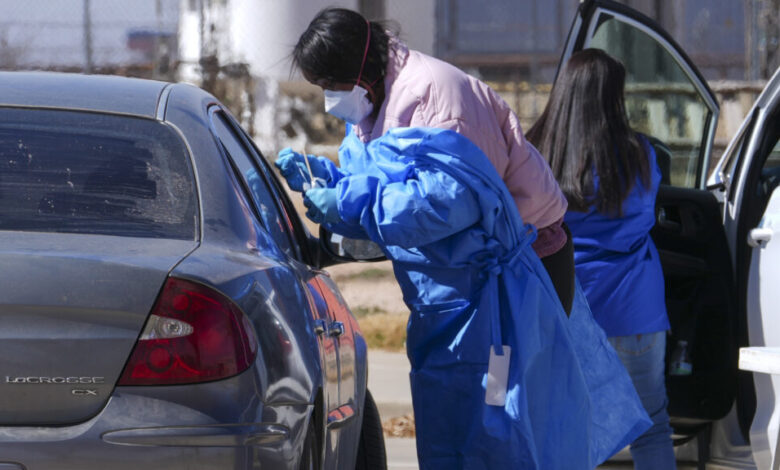Texas measles outbreak reaches 400 cases

As of Friday, at least five states in the United States are experiencing active measles outbreaks, with Texas having the largest outbreak at 400 cases. This surge in cases is alarming health experts, as the U.S. has already surpassed the total number of measles cases reported in 2024, according to the U.S. Centers for Disease Control and Prevention.
In addition to Texas, other states with outbreaks include New Mexico, Kansas, Ohio, and Oklahoma. These outbreaks, defined as three or more cases, have resulted in two deaths since February. Health experts are concerned that the virus may continue to spread in U.S. communities with low vaccination rates, potentially lasting for a year or more. The World Health Organization has also reported cases in Mexico that are linked to the Texas outbreak.
Measles is a highly contagious airborne virus that spreads through respiratory droplets when an infected person coughs, sneezes, or breathes. The disease is preventable through vaccination and was considered eliminated in the U.S. in 2000.
In Texas, the outbreak has affected 400 individuals across 17 counties, with most cases concentrated in West Texas. New Mexico has reported 44 cases, with most in Lea County. Tragically, both states have reported measles-related deaths, with a school-age child dying in Texas and an adult in New Mexico.
Kansas has reported 23 cases in six counties, with the first case linked to the Texas and New Mexico outbreaks. Oklahoma has nine confirmed cases, with exposures confirmed in Tulsa and Rogers counties. Ohio has 10 cases in Ashtabula County, with the first case reported in an unvaccinated adult.
Measles cases have also been reported in Alaska, California, Florida, Georgia, Kentucky, Maryland, Michigan, Minnesota, New Jersey, New York, Pennsylvania, Rhode Island, Tennessee, Vermont, and Washington. The CDC has identified five clusters that qualify as outbreaks in 2025.
The best way to prevent measles is through the measles, mumps, and rubella (MMR) vaccine. Children should receive two doses of the vaccine, with the first dose recommended between 12 and 15 months and the second between 4 and 6 years. Individuals at high risk of infection, such as those living in outbreak areas, may consider getting a booster shot. Adults with evidence of immunity generally do not need additional doses, but a doctor can order a lab test to check immunity levels.
Overall, measles outbreaks highlight the importance of vaccination in preventing the spread of infectious diseases and protecting public health. It is crucial for individuals to stay informed about vaccine recommendations and take necessary precautions to safeguard themselves and their communities. Measles is a highly contagious viral infection that primarily affects the respiratory tract, but can spread throughout the body, causing a range of symptoms. Common symptoms of measles include a high fever, runny nose, cough, red, watery eyes, and a characteristic rash.
The rash typically appears three to five days after the initial symptoms, starting as flat red spots on the face and then spreading down the body to the neck, trunk, arms, legs, and feet. During this time, the fever may spike to over 104 degrees Fahrenheit. While most individuals will recover from measles, the infection can lead to severe complications such as pneumonia, blindness, brain swelling, and even death.
Treatment for measles is primarily focused on managing symptoms, preventing complications, and keeping the patient comfortable. There is no specific antiviral medication for measles, so supportive care is essential.
Vaccination rates play a crucial role in preventing the spread of measles and other infectious diseases. In communities with high vaccination rates, known as “herd immunity,” the transmission of diseases like measles is significantly reduced. However, vaccination rates have declined in recent years, with more parents opting for religious or personal conscience waivers to exempt their children from required vaccinations.
The implications of low vaccination rates were evident in the United States in 2024, when there was a notable increase in measles cases, including an outbreak in Chicago that affected more than 60 individuals. This underscores the importance of maintaining high vaccination rates to protect the community from potentially deadly diseases like measles.
In conclusion, measles is a serious infectious disease that can have severe consequences if not properly managed. Vaccination remains the most effective way to prevent measles and protect individuals from its harmful effects. It is crucial for individuals to stay informed about the symptoms of measles and the importance of vaccination in maintaining public health.





